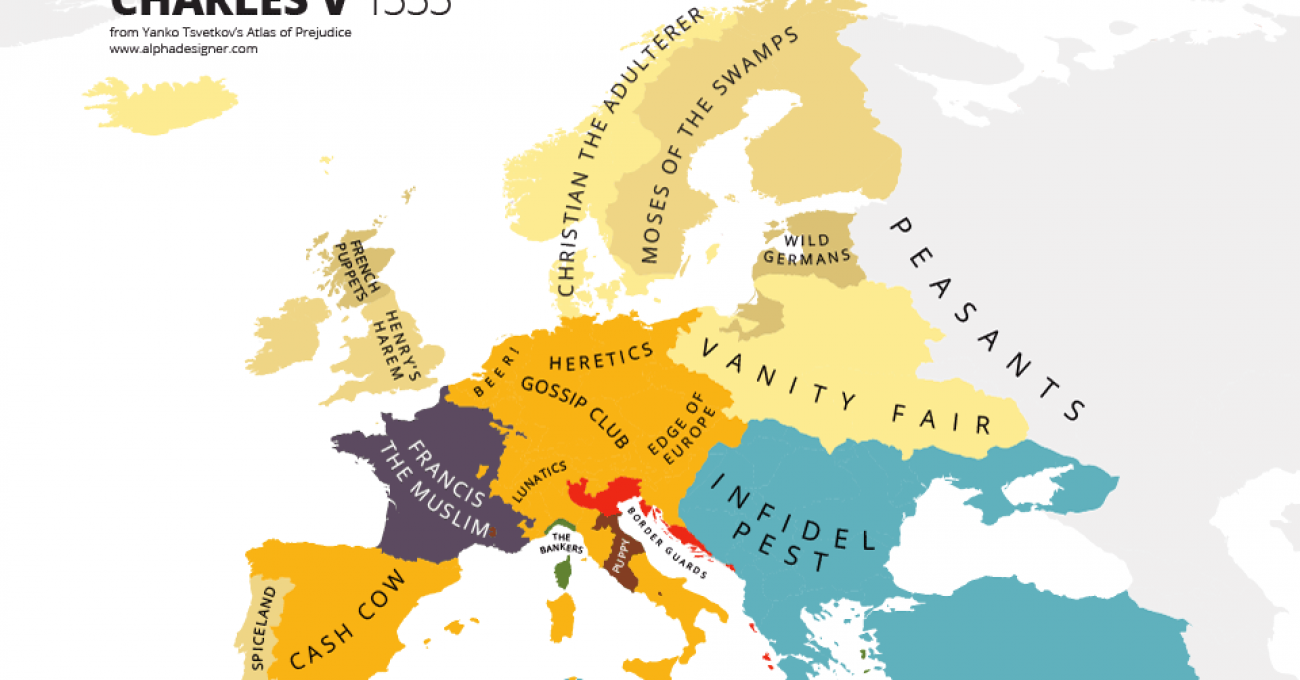Overview
Get students thinking about the attitudes of people towards their world by constructing an ‘Atlas of Prejudice‘ as per the wonderful examples on the Alphadesigner website.
How to do it
Start by asking students to list things we know about how the character, individual or group perceives the world around them. This could be on a local, national or global level as appropriate. Then, convert this into a map to reflect these attitudes and prejudices.
Here, for example, is a map from the Atlas of Prejudice reflecting Europe in 1555, according to Emperor Charles V. It gives a whole new meaning to the concept of ‘Mind-Mapping’!
The approach is easily adaptable for many subjects, including English (focusing on fictional characters and situations) and Geography (how different nationalities see the world, or how different regions view the rest of their country).
Taking it further
Colour coding could be used, for example to highlight positive versus negative attitudes, or prejudices versus genuinely formed opinions.
Icons, Emojis and other symbols could be included along with a key to add a further visual dimension.
Several maps could be used to illustrate how attitudes changed over time.




